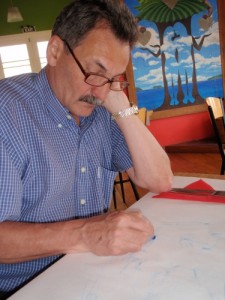AMAtects – June 2013
 Someone asked me recently what ‘sustainability’ meant, in practical terms, when designing a building, and it’s an interesting question. Sustainability may be defined as meeting the needs of present generations without compromising the ability of future generations to meet their needs, and most people would agree that it’s pretty essential to preserve or enhance the earth’s resources for that reason alone. It’s just that not everyone agrees on the best ways to achieve that. It’s a bit like ‘recycling’, another term that can mean different things to different people.
Someone asked me recently what ‘sustainability’ meant, in practical terms, when designing a building, and it’s an interesting question. Sustainability may be defined as meeting the needs of present generations without compromising the ability of future generations to meet their needs, and most people would agree that it’s pretty essential to preserve or enhance the earth’s resources for that reason alone. It’s just that not everyone agrees on the best ways to achieve that. It’s a bit like ‘recycling’, another term that can mean different things to different people.
So, we have arguments for ‘Green’ buildings, which are designed to use energy and water, etc, as efficiently as possible, as well as reduce waste and pollution and protect the health of the building’s users. Then there are the people who think that ‘natural’ buildings are best. These buildings are usually on a smaller scale and use natural, local materials. And, of course, another aspect of sustainability is preserving what we already have, in existing buildings. But transforming, say, a Victorian terrace house into a home that’s energy-efficient and ‘green’ isn’t straightforward – or cheap, and often fails to give optimum results. So an Energy Performance Certificate for a Victorian house that’s been renovated with every green, energy-saving process available will still probably not compare favourably with a ‘sustainable’ new-build house / a sustainably built new house.
So, even if we could get everyone to agree on the basic principle of sustainability, there will always be arguments on how best to achieve it. A Care Home or a Hotel is not really any different from a private home except that it’s a bit bigger – more windows and doors, bigger roof void, larger outside wall areas, etc, all of which can produce heat loss in the building. There are more floors with lots of rooms to supply water and heat to – but the same building principles apply, and if you’re paying to make the building warm then you need to make sure you don’t lose that heat through any windows, doors, walls, etc. Except that while you’re sealing up the building to prevent heat loss you’re also preventing moisture from being released, and that produces condensation: think of how the windows of a car get steamed up when the windows are closed on a cold day, even with only one person sitting in it, and you get an idea of the problem.
Current legislation regarding Sbem calculations (Simplified Building Energy Model) and SAP (Standard Assessment Procedure) encourages energy efficiency and sustainability through not only reduced heat loss, but also the use of add-on ‘renewables’, such as solar and photovoltaic panels. These are expensive, have limited life, require maintenance and, because they tend to have to be imported, can have a large carbon imprint; all of which suggests a very short term attitude. The ‘Passivhaus’, developed in Germany, minimises heat loss through the building fabric by using effective ventilation and the heat generated by the building’s use – occupants’ body heat, appliance heat and solar gain. There is clearly a cost to creating a Passivhaus building, but this would be paid back through reduced running costs. For existing buildings we need to encourage higher levels of insulation, all of which would be cheap, maintenance free and would perform for the life of the building. The result would be a building with high thermal performance, which would therefore use less energy: a passive solution.
